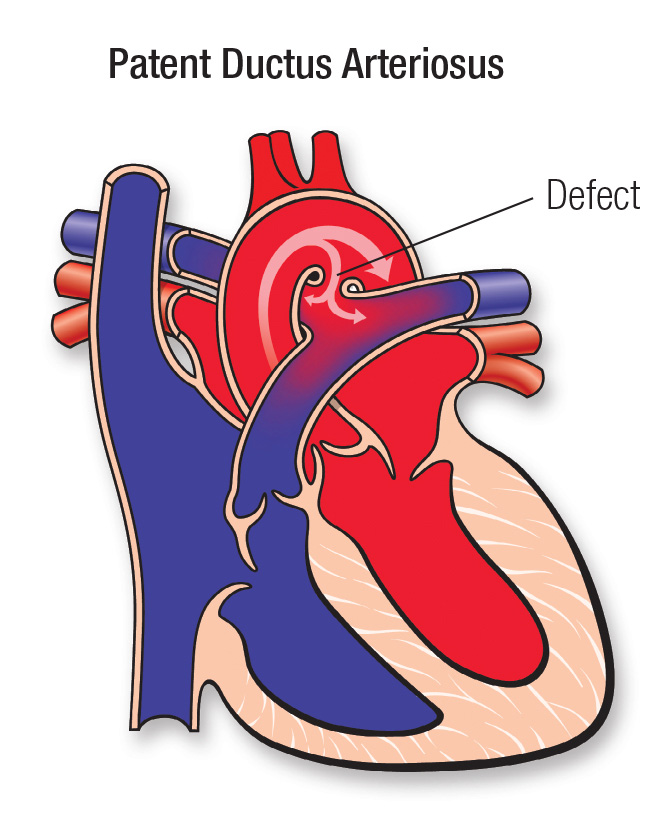
Patent Ductus Arteriosus (PDA)
Before a baby is born, his blood flow is different than in older children and adults: most blood bypasses his lungs. An extra blood vessel (passageway) called the ductus arteriosus (DA) allows blood from the right side of the heart to flow to the aorta, one of the largest arteries, and back out into the body without going through the lungs.
After the baby is born and begins to breathe, the flow of blood to the lungs increases across the pulmonary artery, and the ductus arteriosus usually closes within a few days.
In children with the congenital heart disease patent ductus arteriosus (PDA), the ductus arteriosus doesn’t close. Sometimes the open passageway is wide (a large PDA) and sometimes it’s narrow (a small PDA). A large PDA is dangerous because blood flow to the lungs isn’t as controlled as it should be, leading to problems with the lungs and heart.
PDA is most common in premature infants (those born before the expected delivery date). Symptoms vary depending on the size of the PDA. Patients with a tiny or small PDA usually have no symptoms. Symptoms in patients with a larger PDA include:
Symptoms in patients with a larger PDA include:
Diagnosis of patent ductus arteriosus may require:
Some infants with PDA have other heart defects and will require additional tests, including cardiac catheterization and cardiac MRI / cardiac CT scan.
Small PDAs (especially in premature babies) often close on their own, so some patients may not require any treatment. If the PDA is large, it may need closure.
In premature babies in whom the condition may be dangerous, doctors may give medicines to help close the PDA. If the PDA does not close or narrow significantly in response to medicine, an interventional procedure or surgery to close the PDA may be necessary.
In most cases, a PDA can be closed during a cardiac catheterization procedure. During this procedure, we will insert a thin tube (catheter) through a vein and/or artery in the leg, then guide it in and around the heart. A tiny device is then inserted to block the PDA.
Children often go home the very next day of this procedure. They will also need to rest for the next few days, but then can resume normal activity.
In the most complex cases of PDA, surgery may be required. Cardiothoracic surgeons will use stitches or clips to close the PDA, typically through an incision in between the ribs on the left side of the chest.
Because of enormous strides in medicine and technology, today most children with patent ductus arteriosus go on to lead productive lives as adults. Once a PDA is closed, no long-term follow-up care is necessary unless there are other cardiac concerns.
